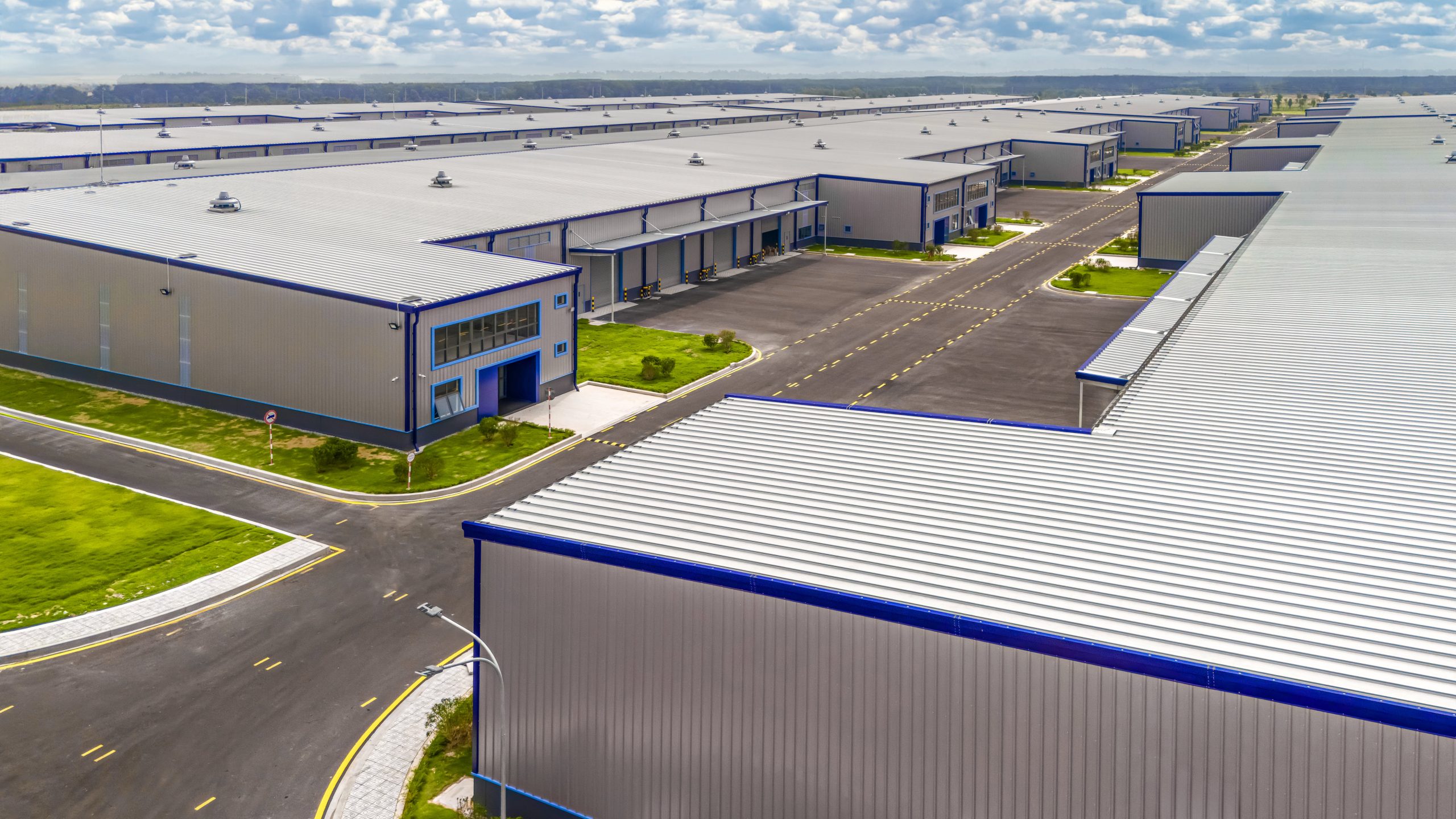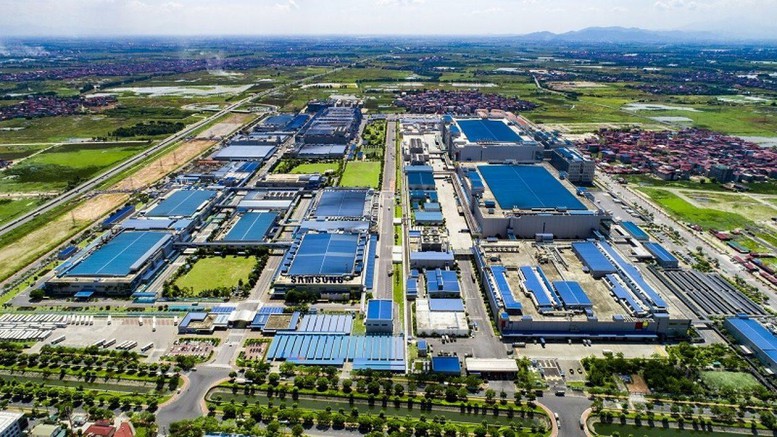Môi trường kinh doanh
Key Transport Infrastructure In Vietnam
July 1, 2024
In recent years, Vietnam stands out as a frontrunner in Asia when it comes to investing in infrastructure, allocating a considerable 5.7% of its GDP to invest in this pivotal sector.
Presently, 50% of transportation runs through the road infrastructure, while maritime transport accounts for 49%. The rail and air transportation only make up a minor 1% of the total transportation, as reported by the Ministry of Transport.
Road Infrastructure
Up to 2022, the total road length across the country is 595,201 km, of which 25,560 km comprises national roads (including national highways and expressways). Some major connecting axes are the North-South Expressway, National Highway 1 (QL1), Ho Chi Minh Road, coastal roads, and border corridor roads.
Specifically, the country boasts 1,822 kilometers of expressways, with 566 kilometers completed in the past three years alone. This accomplishment equals half of the total mileage constructed over nearly two decades. Ongoing construction efforts target approximately 1,071 kilometers of additional expressways by 2025.
A significant highlight in the road infrastructure sector in 2023 is the initiation of a series of component projects for the Eastern section of the North-South Expressway. Three major national projects commenced, including the Khanh Hoa – Buon Ma Thuot expressway connecting the Central coastal and highland area; Bien Hoa – Vung Tau expressway in the Southeastern region; and Chau Doc – Can Tho – Soc Trang expressway facilitating transportation within the Mekong Delta region. With a total investment of US$3.5 billion, these three core projects are set to be completed by 2025, 2026 and 2027 respectively, enhancing the coverage and transportation capacity of the key North-South Expressway.
Simultaneously, in 2023, two significant urban road projects with a total investment of US$4 billion were launched in Vietnam’s major cities: the Hanoi Ring Road 4 and the Ho Chi Minh City Ring Road 3, signify a targeted focus on enhancing urban mobility and connectivity within Vietnam’s major metropolitan areas.
Under government’s planning, the road network will reach 41 expressway routes totaling 9,014 kilometers and 172 national highway routes spanning 29,795 kilometers by 2030. In regard to the core axis, the North – South Expressway, 3,000 kilometers is set to be completed by 2025 and further to 5,000 kilometers by 2030, signaling a steadfast commitment to advancing the country’s road infrastructure.
Rail Infrastructure
Vietnam’s national railway network stretches over 3,143 kilometers and encompasses 277 stations, including 2,703 kilometers of mainline tracks and 612 kilometers of branch lines. Notable mainline routes include Hanoi – Ho Chi Minh City, Gia Lam – Hai Phong, Hanoi – Dong Dang, Yen Vien – Lao Cai, Dong Anh – Quan Trieu, Kep – Luu Xa, and Kep – Ha Long – Cai Lan. Additionally, there are several branch lines such as Bac Hong – Van Dien, Cau Giat – Nghia Dan, Da Lat – Trai Mat, Dieu Tri – Quy Nhon, Binh Thuan – Phan Thiet, and Mai Pha – Na Duong.
This railway network spans across 34 provinces and cities, connecting four out of six economic regions nationwide, with a density of approximately 9.5 kilometers per 1,000 square kilometers. Presently, there are two railway connections with China: one in Dong Dang (on the Hanoi – Dong Dang route) and the other in Lao Cai (on the Hanoi – Lao Cai route).
A significant development in the railway sector in 2023 is the Ministry of Transport’s proposal to the Government and the Party Central Committee to invest in high-speed railway projects along the North-South corridor.
One of the primary tasks for 2024-2025, alongside approving the investment proposal for the North-South high-speed railway project, is to expedite the preparation for investment in key national railway lines. These include the Ho Chi Minh City – Can Tho railway and railway connections to major transport hubs with large traffic volumes (such as the Bien Hoa – Vung Tau railway connecting the international seaport of Cai Mep – Thi Vai, the Thu Thiem – Long Thanh railway connecting the Long Thanh International Airport, and the Hanoi – Hai Phong railway connecting the international seaport of Lach Huyen).
Preparation for investment in the Yen Vien – Pha Lai – Ha Long – Cai Lan railway is also underway. This railway line plays a crucial role in the development of the economic corridor spanning from Quang Ninh to Con Minh, via Lao Cai, Hanoi, Hai Phong. Currently, the Ministry of Transport is studying and adjusting the feasibility study report as a basis for investment deployment in the 2026-2030 period.
Seaport Infrastructure
With 34 seaports boasting over 100 kilometers of wharfage, Vietnam’s maritime infrastructure is strategically developed along the North-South corridor. The Vietnamese maritime fleet comprises 1,015 vessels with a total capacity of 10.7 million tons, ranking third in ASEAN and 27th globally. Additionally, 839 coastal transport vehicles have efficiently handled 100% of domestic maritime freight, with plans for continued expansion to alleviate pressure on road transport and replace other modes of transportation, particularly along the North-South corridor.
A notable highlight in the maritime sector in 2023 is the decision to invest in Can Gio Port Can Tho Port Complex) as an international transshipment hub to attract investment, with implementation slated for the near future. Moreover, there is a strong focus on developing port infrastructure, including dredging key maritime channels such as the Cai Trap Channel, Lach Huyen (Hai Phong Port), Hai Thinh (Nam Dinh Port), Cua Lo (Nghe An Port), Da Nang Port, and Sai Gon – Vung Tau Channels, to accommodate large-tonnage vessels navigating the Hau River.
The goal for 2030 is to develop a synchronized and modern seaport system comprising 36 seaports capable of handling cargo throughput ranging from 1,322 to 1,589 million tons. See more information in An Overview of Vietnam’s Container Ports.
Airport Infrastructure
Vietnam boasts a network of 22 airports, with 11 of them designated as international gateways. Among these, Tan Son Nhat International Airport in Ho Chi Minh City and Noi Bai International Airport in Hanoi stand out as the country’s major aviation hubs. Looking ahead, Vietnam has ambitious development plans aimed at enhancing its aviation infrastructure.
One key project in the pipeline is the construction of Terminal 3 at Tan Son Nhat International Airport. With an investment of US$450 million, this new terminal is slated to commence trial operations in the second quarter of 2025. Once completed, Terminal 3 will be able to accommodate 20 million passengers a year, significantly expand the airport’s capacity to handle the growing influx of passengers, both domestic and international.
Another significant development is the construction of Long Thanh Airport in Dong Nai Province, expected to come into operation by the fourth quarter of 2026. With a huge investment of US$13.5 billion, Long Thanh Airport represents a major milestone in Vietnam’s aviation sector, as it is designed to alleviate congestion at Tan Son Nhat International Airport and cater to the increasing demand for air travel in the southern region.
With ambitious plans to expand road networks, modernize rail systems, enhance maritime facilities, and upgrade airport infrastructure, Vietnam is laying the foundation for improved connectivity, increased trade, and greater accessibility across the country. These strategic investments underscore Vietnam’s commitment to fostering sustainable development and ensuring its transportation networks can efficiently meet the evolving needs of its people and businesses. As such, the future looks promising for Vietnam as it advances towards becoming a key player in the regional and global transportation landscape.






